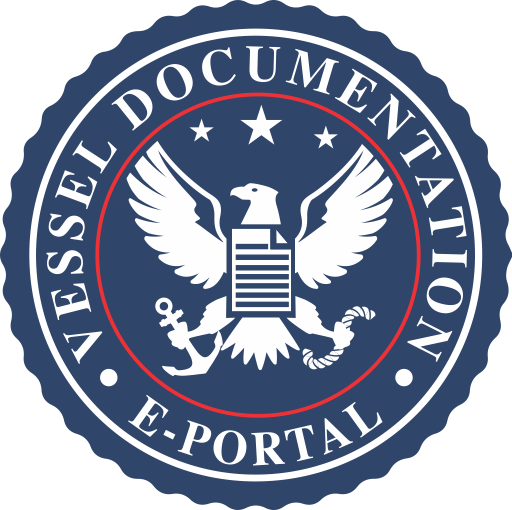Determining whether your vessel measures five net tons is an important step in assessing its eligibility for U.S. documentation. Most vessel owners start by measuring the vessel’s length, as a general guideline is that vessels at least 25 feet long will likely meet or exceed five net tons.
However, net tonnage is not based on weight but on the vessel’s internal volume. This means that certain vessel types, such as wide or tall vessels, may reach the five net ton threshold even if they are shorter than 25 feet.
For a precise calculation, you can determine your vessel’s net tonnage by calculating its total enclosed volume using specific formulas set by the U.S. Coast Guard. This involves measuring the enclosed spaces within the vessel, which are used to calculate its carrying capacity. If you are unsure how to perform this calculation, many professionals or documentation services can assist.
Additionally, to qualify for U.S. vessel documentation, your vessel not only needs to measure at least five net tons but must also be entirely owned by an American citizen or entity. Ensuring compliance with these requirements allows you to move forward with the process of obtaining U.S. vessel documentation through our portal.
What is the difference between net tonnage and weight?
Net tonnage is often misunderstood as a measure of weight, but it actually refers to the internal volume of a vessel. It is calculated in “tons,” where one ton equals 100 cubic feet of enclosed space within the ship.
This measurement excludes non-revenue spaces, such as crew accommodations, engine rooms, and storage for ship supplies, focusing only on the areas available for cargo, passengers, or other revenue-generating purposes.
Net tonnage is primarily used to determine a vessel’s earning capacity, as it reflects how much usable space is available for commercial activities. It is an important metric in the shipping industry for assessing a vessel’s productivity and potential profitability.
In contrast, weight is typically measured in terms of displacement or gross tonnage. Displacement refers to the weight of water a vessel displaces when afloat, which directly correlates to the overall weight of the ship, including its cargo, fuel, and other contents.
Gross tonnage, on the other hand, measures the total internal volume of a vessel, including both revenue-generating spaces and non-revenue spaces like crew quarters and machinery rooms. Gross tonnage provides a broader representation of the ship’s overall size and is often used for regulatory purposes, such as determining port fees and safety requirements.
Understanding these distinctions is essential for vessel documentation, compliance with maritime regulations, and proper classification in the shipping industry. Misinterpreting net tonnage as weight, or vice versa, can lead to communication errors and operational inefficiencies.
Being clear about whether you’re referring to weight or volume ensures accurate assessments, smooth operations, and effective communication across all aspects of maritime logistics.
What types of vessels are eligible for documentation?
To be eligible for documentation, a vessel must meet the following criteria:
- Measure at least five net tons, which generally applies to larger vessels typically over 25 feet in length.
- Be wholly owned by a U.S. citizen or citizens, ensuring compliance with national ownership requirements.
Eligible vessels include both those used for recreational purposes, such as private yachts and pleasure boats, as well as those engaged in commercial activities. Commercial vessels may include those used for foreign trade, fishing operations, or other maritime industries conducted within U.S. navigable waters or the Exclusive Economic Zone (EEZ).
Documentation provides these vessels with legal recognition, supports compliance with regulations, and can even serve as evidence of nationality when traveling internationally.
Are there legal requirements for documenting a vessel?
Yes, certain vessels are legally required to obtain a Certificate of Documentation (COD) issued by the U.S. Coast Guard, complete with the appropriate endorsement for their intended activities. This documentation serves as a national registry, providing proof of a vessel’s nationality and allowing it to engage in specific commercial activities.
Vessels that typically require documentation include those:
- Measuring at least five net tons, which generally applies to larger recreational and commercial vessels.
- Engaged in specific operations, such as coastwise trade or commercial fishing, unless exempted under particular provisions of the law.
The Certificate of Documentation is not only a legal requirement but also a means of protecting your vessel, as it often provides benefits like easier access to financing and recognition in international waters.
Failure to comply with these documentation requirements may lead to penalties, fines, or restrictions on your vessel’s operations. Ensuring proper and up-to-date documentation is essential to avoid such consequences and to maintain the legal and operational status of your vessel.
Who qualifies as a U.S. citizen for vessel documentation purposes?
To qualify as a U.S. citizen for vessel documentation, individuals must be native-born, naturalized, or derivative citizens of the United States. For partnerships, corporations, and trusts, specific citizenship and ownership percentages apply. For example:
- Partnerships must have at least 50-75% equity owned by U.S. citizens, depending on the endorsement sought.
- Corporations must meet criteria such as being incorporated in the U.S. and having U.S. citizens as key officers and shareholders.
Where can I learn more about vessel documentation?
Here at the CG Portal, we make it easy to not just apply for your boat registration, but to maintain it as well. You can also use our site to research vessels before you purchase them, too. To see all of the ways that our portal can help you, click here.
